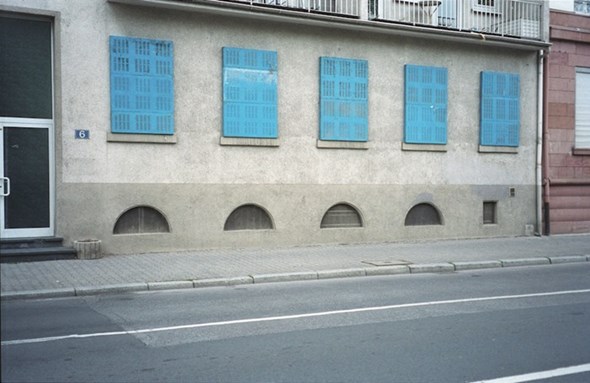
In only three years, gallery Neue Alte Brücke has become the shooting start of the Frankfurt art scene. Mark Dickenson is working together with his artists, among them Simon Fujiwara, on a contrary model to the traditional gallery. By AMANDA COULSON
»I didn’t really want to be a gallery owner,« is Mark Dickenson’s answer to how he got started. Perhaps that’s why Neue Alte Brücke is more like a collective project between him and his artists, where certain preconceived protocols of what a gallery should be are constantly challenged and ever-shifting. Promotion mostly happens through email or word of mouth, no press releases or traditional invitations; events and happenings are traded like some kind of obscure and arcane knowledge.
Dickenson believes the gallery should be elastic and that »artists should be actively involved in the decision-making that forms the alternative.« In 2008, the show Gallery Exchange allowed his artists to intervene in everything from the location to the lighting, the furniture, the architecture. This all makes sense when one learns that he was a fairly successful artist himself, with work at the ICA, MoMA and Tate Modern. After co-founding an artist run space, Arthur R. Rose (a bit of an in-joke if you get the reference), he followed with a M.A. in Curating Contemporary Art from the Royal College London and went to work for Sadie Coles and Vilma Gold.
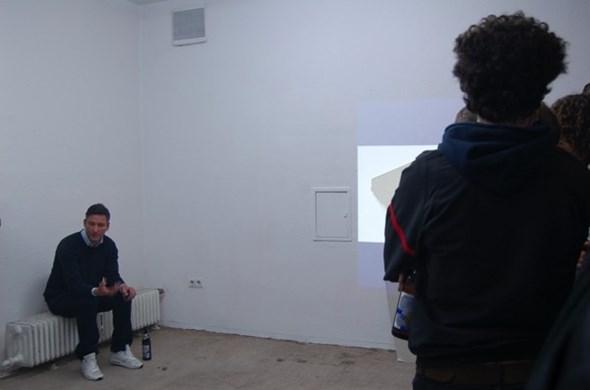
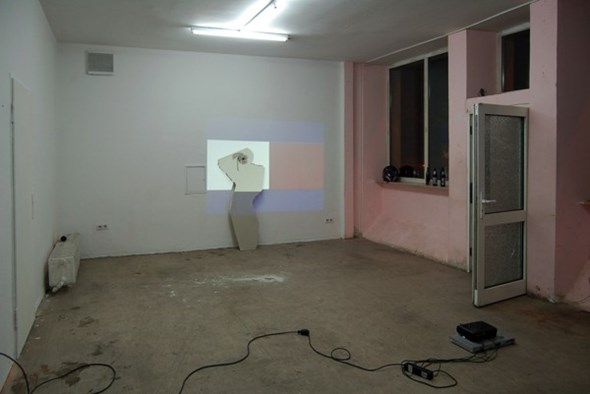
In late 2006, the last thing London needed was another art gallery, so when Dickenson decided to go solo, he went to where he felt the most interesting artists were incubating. While the world likes to think that Berlin is where it’s at, Frankfurt is often where it starts, at the heavily conceptual Staedelschule, run by Daniel Birnbaum, the Director of the 53rd Venice Biennale, and replete with a stellar group of professors. Aside from direct access to the emerging talent pool, Dickenson also wanted to reconnect with Frankfurt’s forgotten history of nurturing conceptual art, hence the »Brücke« (bridge) in the gallery’s name – a bridge between the old and the new. In the 50s, dealers like Dorothea Loehr were creating groundbreaking shows with artists like Richard Long, Jan Dibbets, Daniel Spoerri and Peter Roehr. It was the discovery of a slim pamphlet from one of these seminal shows that lead Dickenson to consider art-world Darwinism: was Harald Szeemann’s When Attitude Becomes Form really the first major show of its kind or merely the best documented? Is all the best art really created in New York, or does it just get the best publicity? Is how a gallery presents itself and its own historical record more important than the actual content? Is history of any kind actually fact or just a consensus on surviving material?
As it happens, these are the same concerns that run deeply through the work of British-Japanese artist Simon Fujiwara (*1982), having commented that, »If you don’t write your own history, somebody else will … to suit their purposes.« Rather than waiting for that to happen, Fujiwara tackles his own history head-on in a series of performances, theatre pieces, slide lectures, vitrines or sculptural objects that are not unlike a display at an ancient science museum or university. As a child of a mixed race marriage, with an entirely absent father, and growing up gay in a small provincial community, Fujiwara certainly has plenty of material, which he tailors to suit his own purposes, so we can never be sure if what he is telling is fact or fiction, a joke or entirely serious.
At the Frieze Art Fair last October, Fujiwara presented his concept for The Museum of Incest in Tanzania, at the »Cradle of Mankind,« to honour our forefathers who, logically, must have committed incest. This theory and his project, densely illustrated with slides and floor plans, intricately connects with his own life story revealed through the course of the lecture: his training as an architect, his trip to Africa as a way to somehow confront his own origins.
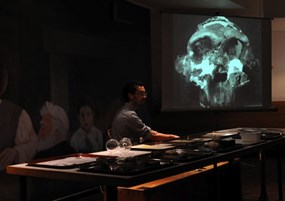
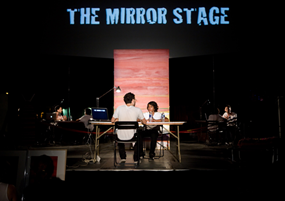
This biography is continued in The Mirror Stage at Art Perform (Art Basel Miami Beach, 2009) which told of his first intense artistic encounter viewing a minimalist Patrick Heron painting in the Tate St. Ives, which simultaneously engendered an erotic awakening. Eroticism and sexuality are also the keynotes in the ongoing project Welcome to the Hotel Munber. Here photographs from the early days of his parents’ marriage in the 70s, when they lived in Spain and ran a hotel, are the starting point for an exploration of gay repression during the Franco regime. One of the main by-products of this last project has been a series of erotic fiction stories published in gay magazines, presented as historical texts recounting trysts from the period. True to his word, Dickenson will shift his focus from gallery owner to editor, hosting pieces by his resident artists not within walls but within the pages of a curated, erotic magazine published in a unique original copy for each issue. The gallery’s shape, therefore, is as protean as Fujiwara’s practice, impossible to put a label on. The only thing to do is sit back for the ride and see where the story takes you.
AMANDA COULSON is an art critic and curator based in Frankfurt.
NEUE ALTE BRÜCKE
Hafenstraße 23
Frankfurt am Main
Germany
www.neuealtebruecke.com
